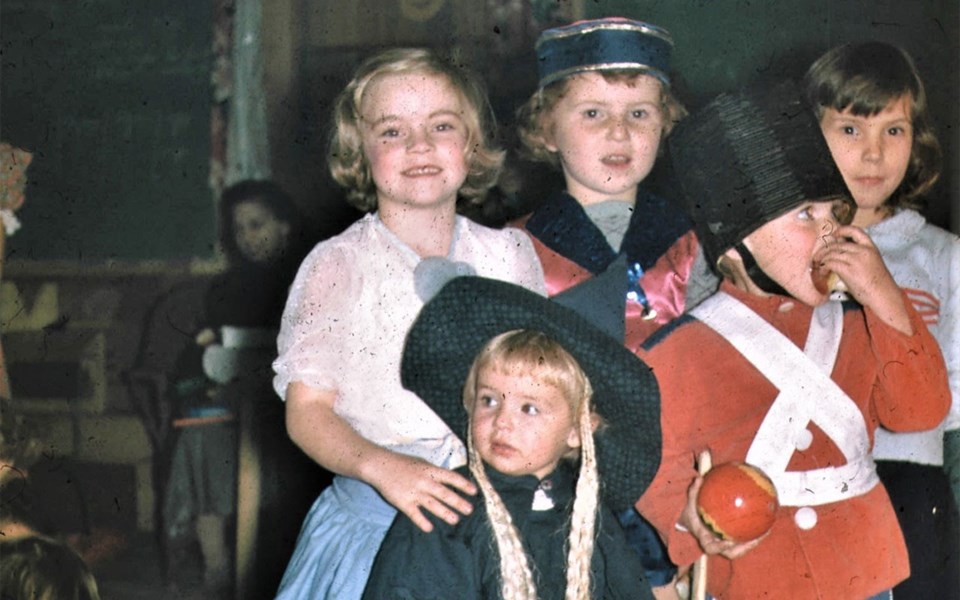We've written quite a bit about Parkhurst and life at the mill before, and often these stories tell of the challenges that came with daily life on Green Lake in the '30s to '50s. Some of these challenges included the isolation, the lack of running water, or the need to haul buckets of sawdust in order to keep the stove going. For children such as Ron and Jim Kitteringham, living at Parkhurst also meant a long commute to and from the Alta Lake School.
According to their mother Eleanor, however, life at Parkhurst also had its share of entertainment and fun.
The Pacific Great Eastern Railway may not have been the most convenient method of travel through the valley, but it did provide some excitement for young children at the mill site. When the Kitteringhams first came to Parkhurst, most of the trains were steam engines, or "steamers." The engineers would blow the whistle on their approach to Parkhurst and Ron and Jim would run out to wave, even during supper.
Later, the "steamers" started to be replaced by diesel engines, which though a lot louder, continued to announce their arrival.
Despite all the whistles of trains, Eleanor described life at Parkhurst as peaceful, lacking the traffic or crowds of a city.
Without more common forms of entertainment, such as television, the Kitteringhams spent time listening to their battery-powered radio and shows such as The Shadow and the racing programs. While the family enjoyed the radio programs, Eleanor regreted the lack of Sesame Street and other educational shows when she thought back on teaching her children.
The journey from Vancouver, though it could be long and inconveniently timed (the train only ran north on Monday, Wednesday and Friday), was also a chance for a social occasion. After taking the steamship to Squamish, the Kitteringhams and other passengers would have time to head to the Squamish Hotel for a 10-cent glass of beer, ice cream for the kids, and a chance to chat until the train headed out.
More social gatherings around Parkhurst happened each summer and fall.
In the summer, the logging camps played regular baseball games at what was then Charlie Lundstrom's farm at the end of Green Lake, an area that today is still full of mosquitoes and long grass. Parkhurst even had a building used as a community hall where families and other workers could gather.
The last big "do" of the year that families would attend was usually Halloween. As Eleanor recalled, the lack of stores to buy costumes meant coming up with some pretty ingenious outfits. After Halloween, most of the families would leave Parkhurst for the winter.
Neighbours could be scarce at Parkhurst, especially in the winter when the Kitteringhams were often the only family left at the mill. Parkhurst was located at Mile 43 and some evenings the Kitteringhams would walk over to Mile 45 for "a musical evening" with the Greens. Bob Green would play first fiddle, Olie Kitteringham second, and Helen Green would play the banjo while Eleanor played the kettle drum.
They even formed a band, the Valley Ramblers, and played for benefit concerts to raise money for the Squamish Hospital.
Daily life at Parkhurst and Alta Lake did come with challenges, but the people who lived here also made sure to enjoy themselves, whether listening to radio shows, playing sports or simply spending time with their neighbours.




